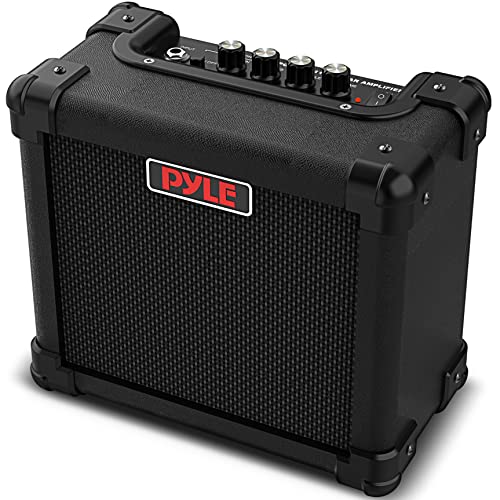Hey
@ntotoro - I read through
several pages of this groovy thread, hopefully enough to augment what
@bandit2013 has kindly shared...
a. Find another JP2C to try out. Sounds like there something not right with the one you've got and you've spent a LOT of time trying to get to the bottom of it

b. Since there has been a fair amount of conversation about the Mark VII, I figured I'd share my $.02 about the differences noting that you have the JP~2C on hand...
1a. The JP~2C is in many way a VERY faithful recreation of the 100/60 Watt Class A/B Mark IIC+. Per Petrucci's love of a REALLY clean clean channle, the clean banks on the power amp section not giving up the proverbial ghost when played loud. That may not be for everyone, but that is what John was looking for, per the out of the box experience. The tightness of the power amp carries over to the 2nd and 3rd channels
1b. Each of the three channels on the Mark VII can run at either 90 Watts SimulClass (Class A and Class A/B), 45 Watts Class A Pentode, and 25 Watts Class A Triode. This is ALL about how you can manipulate the power amp section, and while it does impact volume this is IMHO all about the tone and feel of the amp in terms of how the power amp resonds
2a. The second and third channels of the JP~2C were created to solve one of the main thing people ran into with the original amps - one setting for rhythm one for lead. Back in the day, many players used two. The dual EQ solves that problem in combination with channels 2 and 3. Many players, Petrucci included do not use the Graphic EQ for clean tones. Partially because of the Black Panel vibe and partially to save the Graphic EQs for the arguably more important task of shaping the gain tones
2b. The Mark VII is in many ways a Boogie's greatest hits and does so brilliantly per the various Modes
3a. The JP~2C has CabClone with three options total. A huge help for live and studio
3b. The Mark VII features your choice of 8 IRs for each channel per the built-in CabClone IR. For stage and especially the studio, this is awesome
4a. The JP~2C is based on the architecture of the Mark IIC+ which did not have any Modes at the channel level. The what you see is what you get vibe is really appealing and as much as I LOVE the options on the Mark VII, the JP~2C is SO good at everything it does you don't miss the options, if you the Mark IIC+ on steroids is your jam

4b. The Mark VII has 3 Modes per channel.The ability to have both Fat and Crunch Modes on Channel 1 and Channel 2 gives you some great options that are not mutually exclusive, so to speak. As the Mark series has evolved the ability to choose different Modes is something that some folks love, for others, they look at the amps and get option overload. Nick, per one of your posts, Modes cannot be controlled via MIDI.
Those, IMHO are the big bullet point contrast points. There are a couple of particularly awesome features on the JP~2C that are VERY much worth mentioning...
Dual Presence controls (push/pull pot) on Channels 2 and 3. The 'second' Presence option is set a lower frequency than that found on any other Boogie. If you've ever wished that the Presence was just a tad bit lower in frequency, this feature is for you. It's noticeable and it's AWESOME.
Dual Gain (push/pull pot) on Channels 2 and 3. The manual goes into detail on the what and the why, but I'll loosely summarize by saying it's based on how people dialed in the Mark IIC+ per soaring lead tones per how much gain you introduced to the circuit.
Shred. Just to the left of the Standby Switch is the mini-toggle for Shred. This name could be misleading for some. This is a rhythm guitar feature designed to 'shred your face', not shred lightning fast solos. That's why the options are Channel 2, FS/O (foot switch / off), and Chanel 2/3.
CABINETS!!!
So here's the deal IMHO, if you want the experience of the JP~2C you GOTTA use a Boogie cab. I'm a fan of the oversized, 4x12 Rectifier Standard cabs. I personally prefer the slants, but also love the straights. Given your Plexi background I'd suggest either one of the slanted 4x12 cabs. The horizontal and vertical 2x12 cabs are great as well, and between them I'd suggest the vertical (it's slanted) per being more 'on axis' with the cab in a live setting when standing on stage. This is tthe same the I love about the Standard slanted cabinets - on axis 'playback' standing or sitting. And yes, 2 of the vertical cabs would be awesome! Bogner v30 cabs are AWESOME as are Marshall cabs, but in IMHO, they work and sound best when using the amps they were designed for. Go with a Boogie cab and you will not regret it. It is a MASSIVE part of the experience...
OK! So I'm currently out of the country, and won't have a lot of connectivity until a get back but figured it might be a help to share the above. Looking forward to seeing how many pages this thread is when I get home

Cheers ~ Doug























